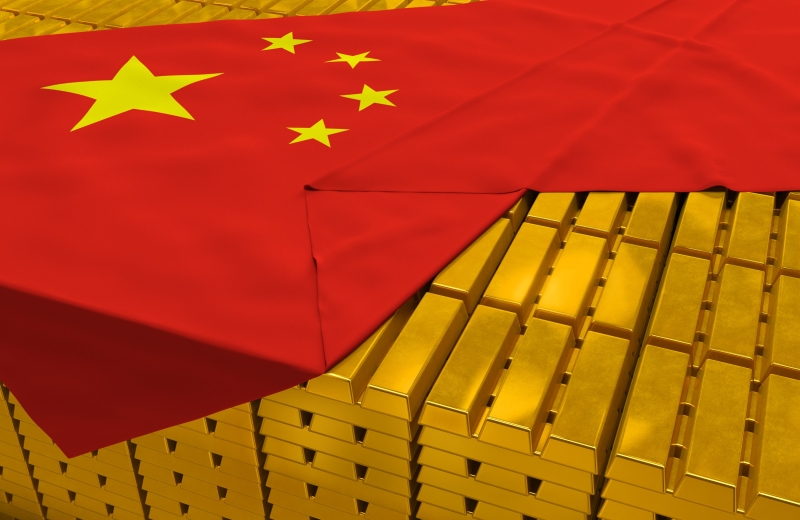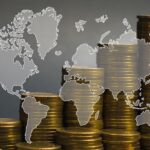Does China’s Central Bank Control A Billion Ounces Of Gold?

(February 15, 2024 - Patrick A. Heller)
In 2003, China’s central bank, the People's Bank of China, began acquiring gold reserves. It did not report these purchases to the International Monetary Fund (IMF) until April 2009.
One of the traders in the London market, where these purchases were handled, anonymously informed a precious metals market observer friend of mine about these trades, including the amounts being spent. Each time, the amount spent was in the hundreds of millions of dollars to over a billion dollars.
This friend shared this information on the initial and subsequent acquisitions with me and others at the time, but it wasn’t until 2005 that I was able to corroborate from another source that this was accurate information. I then alerted my company’s customers to what was happening—out of the public eye.
In April 2009, the Chinese central bank finally revealed that they had increased their gold reserves by 14.6 million ounces since the end of 2002.
A major reason to keep these huge purchases secret was to keep the price of gold from running up once those in the gold market recognized that demand was stronger than they thought. When I wrote about China’s admission of gold reserve purchases, I warned that it was highly likely that the central bank had purchased additional gold beyond what they acknowledged.
This secret informant continued to report further Chinese central bank gold purchases from May 2009 onward.
There are a handful of gold market tracking agencies that issue periodic reports on global supplies, demand, and inventories. None of these services had included these purchases of 14.6 million ounces of gold from 2003 to 2009 in their data. Among those who failed to account for this higher demand were the World Gold Council, Gold Fields Mineral Services (GFMS), and CPM Group. GFMS, for instance, claimed that the Chinese bought its gold out of rising domestic production, which had supposedly climbed from five million to 9.2 million ounces in the previous several years. All domestic Chinese gold mine output goes to the government.
Experts familiar with the state of the Chinese gold mining industry say this increase was simply not possible. The infrastructure did not exist for such an expansion.
As of the end of 2023, China’s central bank officially reported holding 71.9 million ounces of gold. That is a massive increase from its reported 12.9 million ounces of reserves at the end of 2002.
Obviously, the Chinese have been importing massive quantities of gold.
The Shanghai Gold Exchange (SGE) was established in 2002. It deals almost exclusively in physical gold for immediate delivery when a contract is purchased. A contract cannot be offered for sale until after the underlying gold has been received in the SGE vaults. Since it began operation, 739.4 million ounces of gold have been withdrawn from the SGE. Some of these withdrawals may represent the same kilogram-size bars in two or more transactions.
There is no public information as to how much of the SGE withdrawals went to the Chinese government or central bank and how much to private owners. Foreigners cannot purchase SGE gold for export purposes. Once gold is imported into China, it stays there.
One savvy gold market observer wrote recently that he suspects that the Chinese government effectively controls at least one billion ounces of gold. Furthermore, between the government and Chinese citizens, total gold holdings may be as much as 1.6 billion ounces. (Note that total physical gold extant in the world may be about six billion ounces.)
Well, how could you get from the officially reported 71.9 million ounces of central bank gold reserves up to a billion ounces controlled by the Chinese government?
There are multiple means by which the Chinese government could effectively control far more gold than officially reported as central bank reserves:
1) Central bank reserves may (I think probably) be higher than what is officially reported.
2) Chinese government sovereign investment funds could own gold. The China Investment Corporation was established in 2007, with an initial capital of $200 billion. Its purpose was to explicitly diversify the country’s soaring foreign exchange holdings into other assets. This is the largest of these funds, but there are others.
3) The Chinese military almost certainly holds gold, either directly or in the inventories of businesses that it controls.
4) Gold is also almost certainly held in the inventories of businesses directly owned by the Chinese government.
I have seen estimates from a wide range of gold market observers I respect. While only one of them thinks that the Chinese government may control a billion ounces of gold, every one of them is convinced that the effective gold holdings are far higher than the reported 71.9 million ounces. Most or all of them now judge that the Chinese government controls more gold than the US government. (Note: I have serious doubts that, even if the US government has custody of all the gold it reports, it has title to all of it. That is a subject for a different discussion.)
But what could be the reason the Chinese government would want to build the world’s largest hoard of physical gold? In my judgment, as many others have said, he who owns the gold rules.
Physical gold has been used as a financial asset for 6,000 years and never failed. With that track record, it would be the ideal asset to accumulate to win an economic war.
For China to challenge the United States as the world’s dominant economic power, it would need to make its currency the effective world reserve currency.
In a world of fiat (paper) currencies not backed by anything but the faith and credit in the issuing government (an increasingly scary proposition), a currency that would be redeemable for a stated amount of gold on demand would quickly displace all other currencies in international commerce.
It is possible that China may already control enough gold that it could make its yuan currency redeemable in gold.
So, why hasn’t China’s government already done so?
The top reason is that the Chinese government’s growing wealth comes from its trade with other nations. China is the world’s largest exporting nation. If China were to impoverish nations around the world by engaging in a military conflict or by destroying the purchasing power of their fiat currencies, that would devastate Chinese exports.
Another dilemma is that, after the Federal Reserve Bank, China’s central bank is the second largest holder of US Treasury debt and US currency. Even after disposing of about a quarter trillion in US Treasury debt in the past three years, it still holds about a trillion dollars of US obligations.
In a protracted dispute, might the US government repudiate those debts? Would the Chinese government be willing to take this hit if the result would be to dominate the US? Not if it could avoid it.
For China to successfully dominate the world economy, it would have to find a way to assert the dominance of the yuan without major military actions or economically devastating the wealth of other nations.
You can be sure that Chinese government officials are acutely aware of this obstacle to making the yuan the world’s reserve currency. Any plan to manage this obstacle would certainly take years to implement.
Do I think that the Chinese government plans to inflict an economic World War III on the US and other nations at some point? I do.
However, the Chinese government has substantial domestic economic problems right now that are demanding attention. The real estate market in the country is so overheated that the largest property development businesses are going bankrupt. A wide swath of other businesses are poorly operated (such as the domestic gold mining industry) because of the command-and-control system that does not fully embrace the efficiencies of individual entrepreneurship.
While the Chinese government has to deal with its domestic troubles, look for it to seek allies to further its global goals. The expanded BRICS consortium, now with ten full members accounting for more than 40% of the world’s population, is one such strategy. The Belt and Road Initiative and the Shanghai Cooperation Organization are others.
So, even though the road ahead will not be smooth and easy for the Chinese government, the actions it is already taking and will pursue will hasten the demise of the purchasing power of the US dollar. It doesn’t really matter whether the Chinese government and central bank today control one hundred million ounces of gold or a billion ounces.






